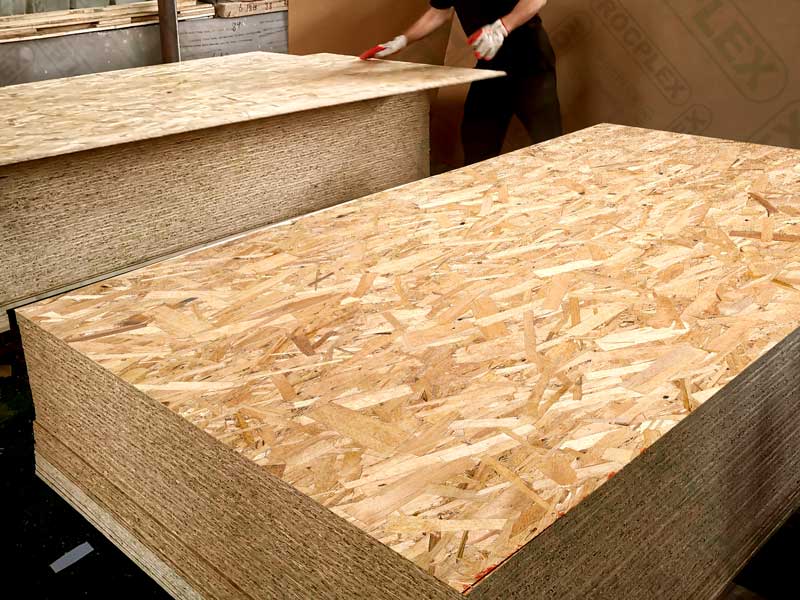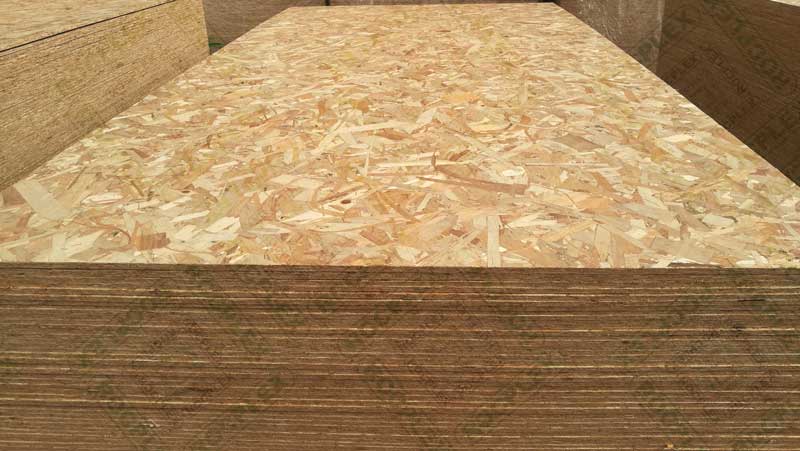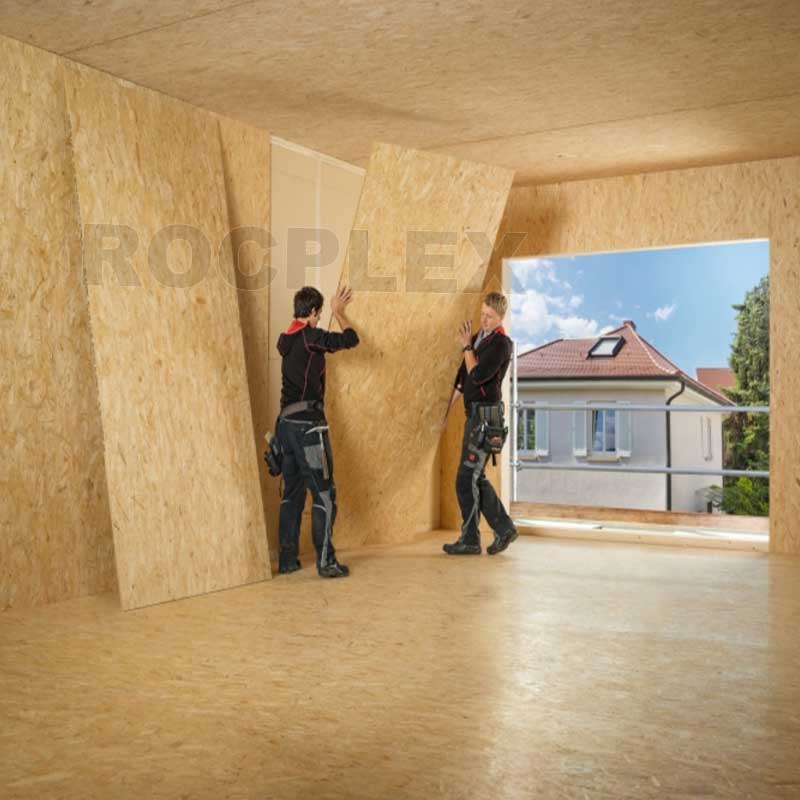OSB (OrientedStrandBoard) is a type of engineered wood similar to particle board, which is formed by adding adhesives, and then compressing the layers of wood in specific orientation strands (flakes).
It was invented by Armin Elmendorf of California in 1963.
OSB may have a rough and mottled surface, with a single strip of about 2.5 cm × 15 cm (1.0x5.9 in.), placed unevenly across each other, and in various types and thicknesses.
Use of OSB
OSB is a kind of material with good mechanical properties, which makes it particularly suitable for load-bearing applications in buildings.
It is now more popular than plywood, accounting for 66% of the structural board market. The most common use is as a jacket for walls, floors and roof decks.
For exterior wall applications, the panel can be laminated with a radiation barrier on one side; This simplifies installation and improves the energy performance of the building envelope. OSB is also used in furniture production.
Manufacture of OSB Board
The types of adhesive resin used by OSB include:
Urea formaldehyde (OSB1, non structural, non waterproof); Isocyanate based adhesive (or PMDI polymethylene diphenyl diisocyanate based adhesive) in the internal area and melamine urea formaldehyde or phenolic resin adhesive on the surface (OSB2, structure, surface waterproof); Phenolic resins (OSB3 and 4, structural, for wet and outdoor environments).
These layers are formed by chopping the wood into strips, which are screened and then oriented on a belt or wire mesh. Mats are made on the forming line. The outer layer is aligned with the strength axis of the panel, while the inner layer is vertical. The number of layers placed depends partly on the thickness of the panel, but is limited by the equipment installed at the manufacturing site. The thickness of each layer can also vary to provide different finished panel thicknesses (typically, a 15 cm (5.9 in) layer will produce a 15 mm (0.59 in) panel thickness). The pads are placed in a hot press to compress the sheets and bond them by thermal activation and curing of the resin already coated on the sheets. The individual panels are then cut from the mat to the finished size. Most OSB in the world are manufactured in large production facilities in the United States and Canada.
Related products
Materials other than wood have been used to produce products similar to OSB. The straw board with directional structure is an engineering board that splits the straw, adds P-MDI adhesive, and hot presses the straw layer in a specific direction. Particleboard can also be made from bagasse.
#OSB #OSBboard #PB #particle board
Post time: Sep-14-2022



